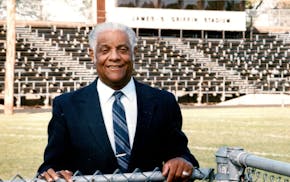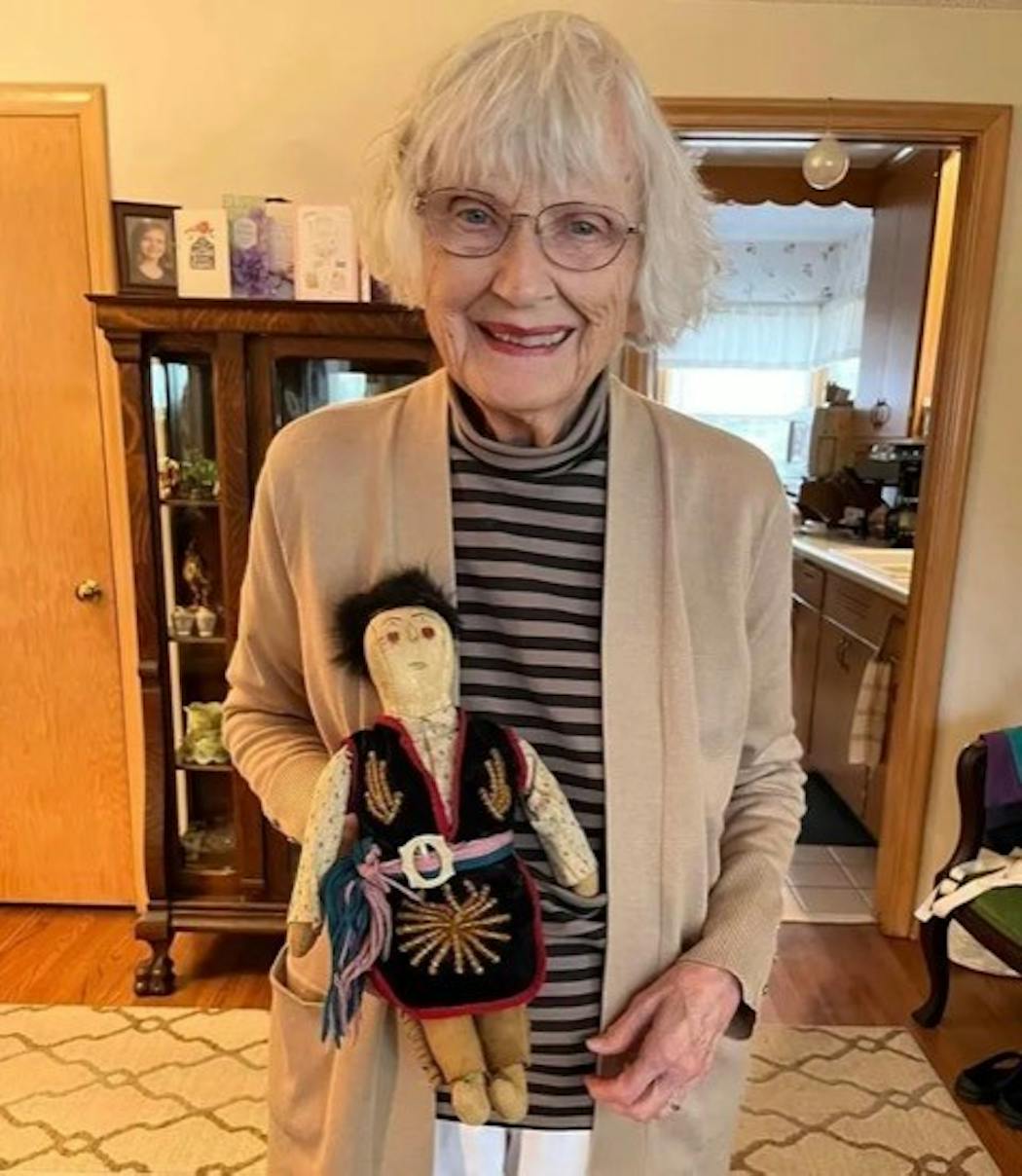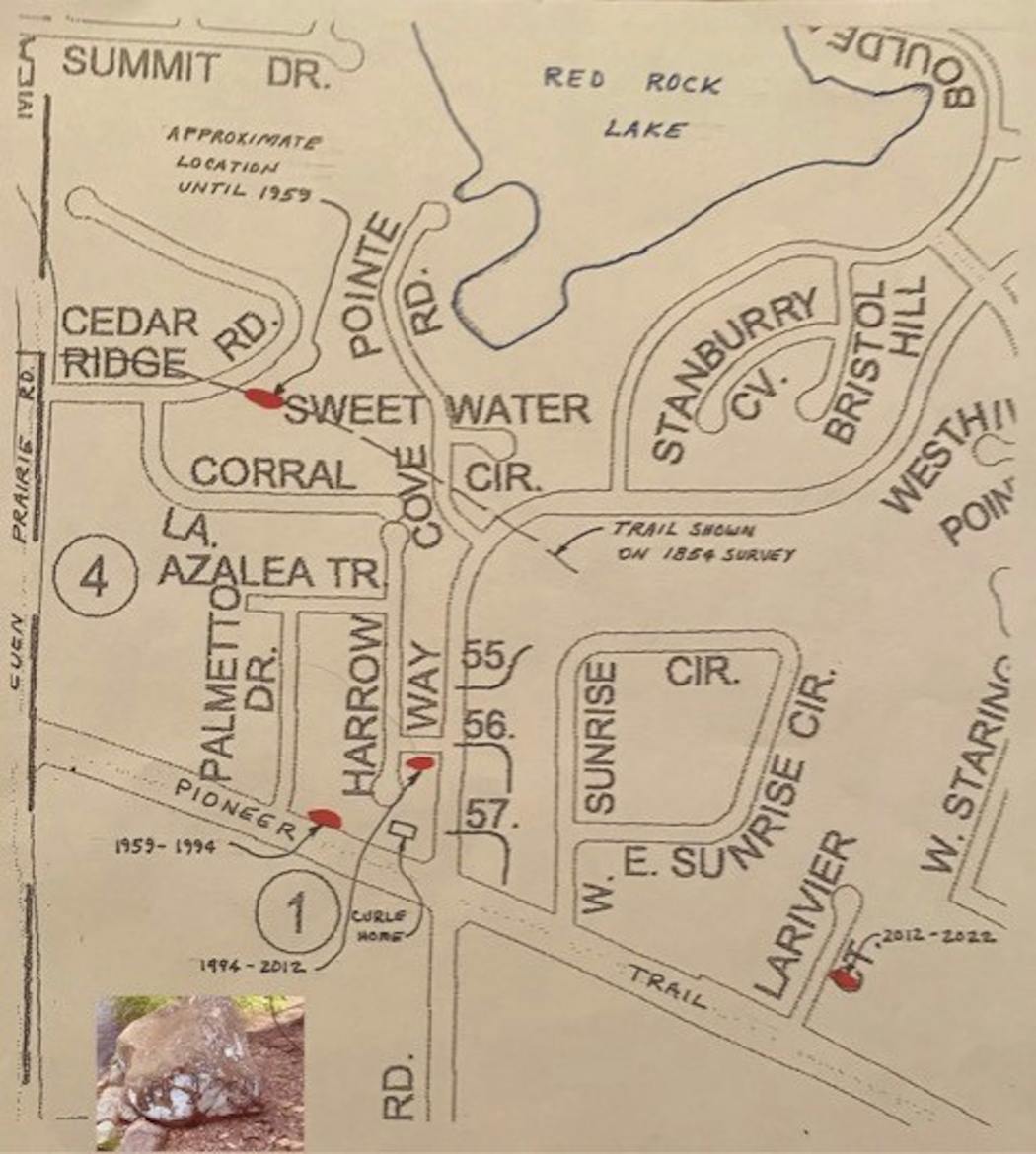The red sandstone boulder in Eden Prairie was more than just a marker along an old Dakota trail between Shakopee and Lake Minnetonka. Left by ice age glaciers 10,000 years ago, the 4- by 3-foot rock became a sacred touchstone to the Dakota — connecting them to their creation story.
As Eden Prairie grew from pioneer settlement to booming suburb, the Dakota people were forced west to reservations and the sacred Red Rock's spiritual side nearly vanished.
By the 1960s, it was painted bright red as a sign for the Red Rock Ranch, a western-style horseback riding stable on Mitchell Road and Pioneer Trail. Then the rock was tucked behind a nearby barn for 18 years.
When new housing replaced the barn, the rock was moved to the front yard of Ron and Kathie Case — now Eden Prairie's mayor and Historical Society president, respectively.
Finally last September, after a serendipitous series of connected dots and gumshoe detective research, a Bobcat hoisted the rock onto a flatbed truck and hauled it to the Lower Sioux Indian Community near Morton, Minn., where a placement ceremony with tribal elders was held in May.
"We hope that in returning the rock to its rightful owners, we are fostering a trusting and harmonious relationship between two cultures," said Kathie Case, whose Eden Prairie Historical Society voted unanimously to follow a 1990 federal law that calls for returning human remains and sacred objects to Indigenous people.
Case credits two people for documenting the Red Rock's history and getting it back into Dakota hands: Lower Sioux tribal elder and documentary filmmaker Sheldon Wolfchild and 92-year-old Betty Curle Baxter of Minneapolis, whose grandparents in 1883 purchased 80 acres in Eden Prairie Township where the rock sat for decades.
Baxter's father, George Curle, was born in 1886 and could see the rock from his bedroom window. "He remembered Indians sitting silently around the Red Rock, smoking their pipestone pipes," Baxter said.
A member of Baxter's church heard her stories of early Eden Prairie and told Wolfchild, who was researching a dozen spiritual red rocks that had reportedly dotted Native American trails in Minnesota. When he went to the Eden Prairie Historical Society, Wolfchild was amazed to learn that the rock rested in the front yard of the mayor and Historical Society director.
It had sat there for 10 years, the Red Rock's fourth documented site. The couple took possession of it when neighbor Mike McGraw sold his property with the rock on it in 2012. Longtime resident Don Libby, who remembered Dakota ceremonies at the rock since the 1940s, had urged McGraw to protect it.
Wolfchild said he ran into reluctance to turn over a similar red rock outside a Newport church, so he was pleasantly surprised by the willingness of Kathie Case and Eden Prairie leaders to surrender their rock to Dakota elders. He invited Case and Baxter to join the ceremony in May.
"Thank goodness for them," said Wolfchild, 76. "They stood up and understood the spiritual connection to our beliefs."
Kathie Case noted that the rock long predated Eden Prairie, established in 1858. "This entire area was Native American land, even though they sadly didn't own it, it belonged to them," Case told the Eden Prairie Local News in June (tinyurl.com/RedRockarticle).
Wolfchild, she said, "was absolutely stunned how willing we were to give it back after we did our historical research. They're not used to being given things back, and it was emotional."
Said Ron Case: "It's an amazing feel-good, win-win story that brings a positive light to Eden Prairie's relationship with our Indigenous past."
Kathie Case said Baxter's keen memory gave her research team a living link to the rock's story. And they found multiple mentions of the Red Rock in a 1914 book on Minnesota pioneer life, "Old Rail Fence Corners."
The book quotes May Penny, whose father William Collins bought the land with the rock for $100 in gold in 1853, as saying Dakota warriors prayed at it: "There was room for one Indian to lie down close to the rock, the others would dance around or sit in council."
Collins sold the property in 1883 to Baxter's grandparents, John and Pauline Curle. Baxter acknowledges that her father's description of the rock doesn't exactly match; the rock he recalled was smaller and flatter, and granite rather than sandstone.
"The physical descriptions we came across are all over the map, but Mr. Wolfchild was convinced the rock held the energy of his ancestors," Baxter said.
Wolfchild said the relocated Red Rock has been power-washed at its new home, revealing its reddish hue. "That's why they call it Red Rock," he said. "It's pure and red, with a powerful history."
Curt Brown's tales about Minnesota's history appear every other Sunday. Readers can send him ideas and suggestions at mnhistory@startribune.com. His latest book looks at 1918 Minnesota, when flu, war and fires converged: strib.mn/MN1918.

Minnesota History: Ad man turned Paul Bunyan into a folklore icon

Minnesota History: James Griffin used persistence to blaze a trail for St. Paul's Black police officers

Minnesota History: For Granite Falls doctor who tested thousands of kids for TB, new recognition is long overdue

Minnesota History: A New Ulm baker wearing a blanket fell to friendly fire in the U.S.-Dakota War





